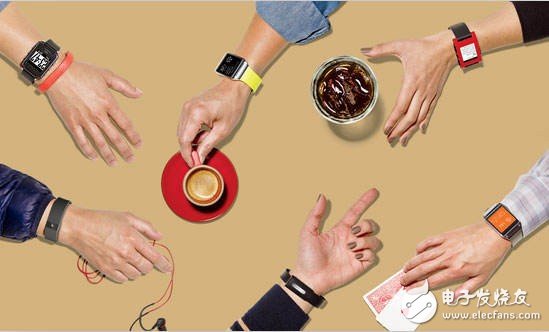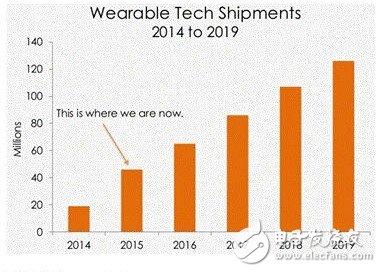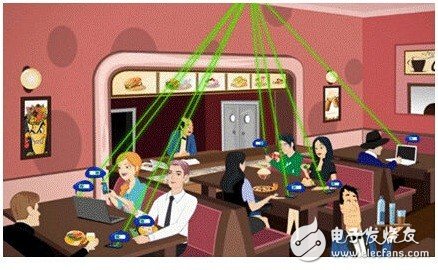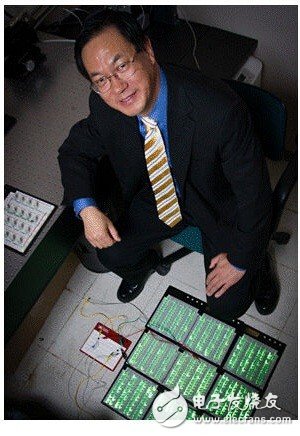Wearable devices (also known as "wearable devices") are the right products, but battery life is a big step in the growth of the wearable device market. If the wearer can charge his device anytime, anywhere, the wearable device no longer needs to use a large battery to extend the endurance! If the technology of triboelectric nano-generators can be achieved in the future, all dreams can come true! According to market research firm IDC, in 2014, the market for wearable devices (basic and smart) was approximately 19.6 million units. In 2015, shipments are projected to grow to 45.7 million units. Taiwan will see 126 million units in 2019 (Figure 1), and the average annual compound growth rate for the five years is as high as 45.1%. Figure 1. Estimated shipments of IDC wearable devices Such optimistic predictions should be based on the consumer behaviors that have been constructed in the early stages of the early adopters of high-tech products and the long-term market demand that is oriented towards commodity practicability and even necessities; and everyone is very It is clear that "practicality" is the guarantee that wearable device products can stand still and never stop. The "practical" pointer of the wearable device, in addition to the function (funcTIon), the most important thing is the "end of life". In the current most embarrassing Apple Watch, every night has to take off and charge the electricity, consumers have been a little troublesome, if the 24-hour monitoring of medical care wearables, also need to take off every day to recharge, this kind of The practicality of things has been greatly reduced. In terms of current product performance, battery life is indeed a big cover for the growth of the wearable device market. To improve the endurance of the wearable device, we can start from two aspects, one is to design components such as sensors, processors, communication modules, etc., which are extremely low power consumption, and optimize the power management of the system; the second is to improve the battery technology. Battery technology faces more challenges than the improvements in semiconductor component design. Nowadays, manufacturers must not only develop batteries with superior endurance and small size, but also make the battery have flexible characteristics to match various types of wearable devices. In the future, the functions of smart wearable devices It is bound to be more powerful, which means that the components contained in the device will be more and more. As a result, the power consumption will only increase and not decrease. Therefore, battery technology must have a major breakthrough in order to prepare for the rain. Extending the endurance of the wearable device, in addition to waiting for the support of the new battery technology, the user can also "feel" by "changing the charging method", for example, a wearable device with (telephoto) wireless charging function. You can charge at any time without having to take off, always turnon, but only if you need to match the installation position of the wireless charging transmitter (Figure 2); if you follow the principle of Energy HarvesTIng, The kinetic energy (swing, friction) generated by the wearer is converted into electric energy to supply power, so that the battery can be fully charged anytime and anywhere, and there is no restriction on the charging position, so the wearable device can serve you all the year round. . Figure 2, schematic diagram of remote wireless charging Although the technology of energy harvesting is still in the research stage, there have been remarkable breakthroughs. For example, Professor Prof. Zhong Lin Wang of the Georgia Institute of Technology and his team used the "Triboelectric Effect". And the Triboelectric Nanogenerator (TENG) designed by the principle of "ElectrostaTIc InducTIon" is a good example. The team's achievements in this research topic have already generated electricity per unit area. The density (Area Power Density) is increased to 1,200 W/m2, and the energy conversion efficiency is also as high as 50% to 80%. The power supplied can even illuminate 1,000 green LED components (Figure 3). ). Figure 3. Using a shoe to hit the nano generator on the floor, the generated electricity can illuminate 1,000 LEDs. TENG not only involves electrical principles, but also materials, chemistry, and nanotechnology. Its output performance can be enhanced by a variety of methods, including material selection, film surface texture and nano-compound structure. In addition to metal, there are also polymethylmethacrylate (PMMA), polytetrafluoroethylene (PTFE; Teflon), polydimethylsiloxane (PDMS). ), Kapton thin film, indium tin oxide (ITO) and polyester (PET), etc., the difference is that different materials have different saturated frictional charge densities. "The output capable of generating a large amount of charge depends on the nature of the friction surface. The pattern of the nano material on the surface of the polymer film increases the contact area of ​​the sheet, and the generated electric power can be thousands of times different", so in order to increase The contact area, the surface of the film is usually designed as a dense sawtooth, granules or long brush. Zigbee Compatible Bulbs,Zigbee Flexible Smart Bulb,G-Series Zigbee Light Bulb,Zigbee Filament Bulb t-smartlight , https://www.t-smartlight.com


